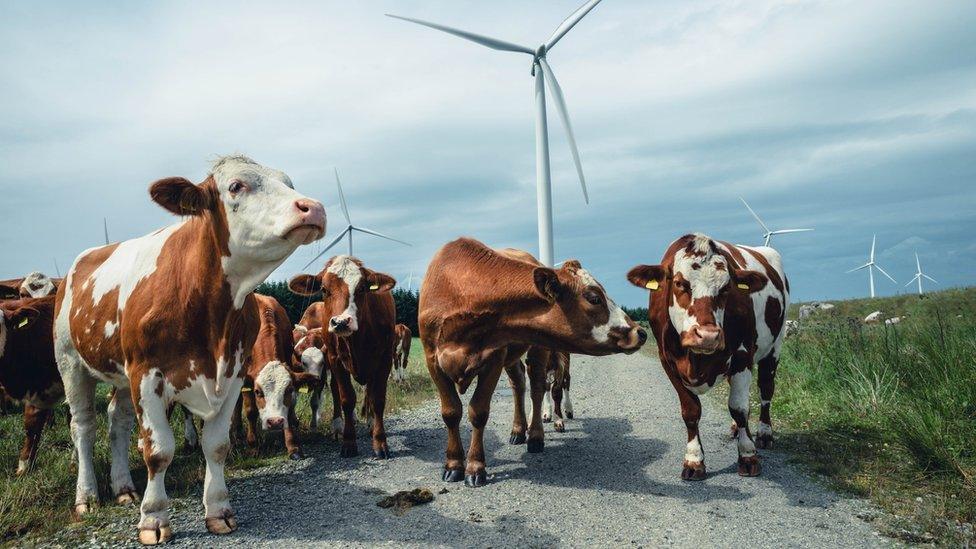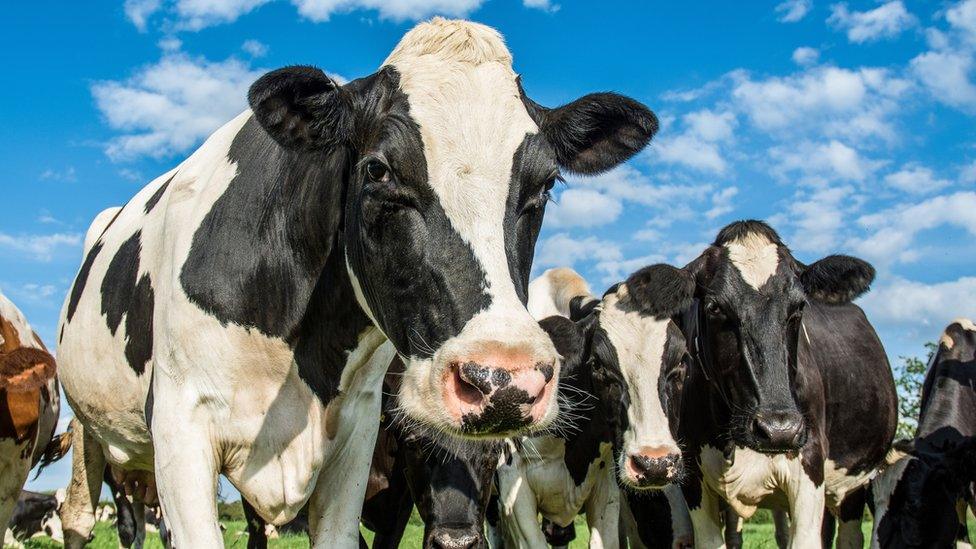Climate change: NI 'needs radical action' to meet net zero goal
- Published

Radical action is needed for NI to meet its 2050 net zero targets, a committee finds
Northern Ireland will fall well short of a 2050 net zero emissions target unless "radical action" is taken, says the Climate Change Committee (CCC).
The CCC says measures including a reduction in livestock by a third and an increase in electric vehicles within a decade will not be enough.
Stormont set the net-zero goal in 2022.
In a report, the CCC proposes an alternative option to cut 83% of emissions but says even this would be "extremely challenging".
The committee advises the government on emissions targets and reports to Parliament on progress made in reducing greenhouse gas emissions.
Its latest advice is that it has not seen sufficiently ambitious policy in Northern Ireland to meet either net-zero or interim targets.
"That must change," the committee warns.
One of the CCC's proposed options, called the "updated balanced pathway", would see most sectors completely decarbonised by 2050.
That pathway includes reducing livestock by almost a third, decarbonising electricity generation while meeting rising demand, significantly increasing peatland restoration, and requiring new cars and vans to be zero emission by the early 2030s.
But the committee says that will not be enough to fully reach net zero by 2050 due to residual emissions from the agriculture sector which is more economically significant in Northern Ireland than elsewhere in the UK.
The committee has also developed what it calls a "stretch ambition" plan that achieves a 93% reduction, compared with 1990 levels.
But again, that is still short of the net-zero target set in the Climate Change Bill passed by Stormont last year.
The pathway to reaching a 93% reduction would require tree planting to increase to 3,100 hectares a year, six times higher than the rate reported in 2021-22.
It would also include "engineered removals" based on carbon capture and storage, which the committee said would require significant investment and infrastructure development.
'Speculative pathways'
To balance the residual emissions from agriculture, two "speculative pathways" have also been considered - one with deployment of direct air capture (DAC) technology and another where livestock numbers are halved.
But the committee warns that DAC technology is expected to be costly and challenging to deliver.
Its assessment is that "some DAC deployment would be required" but lowering livestock numbers would reduce that need significantly.
The committee adds that it is up to Northern Ireland to decide whether to pursue other speculative options in addition to DAC.
Based on the DAC speculative option and without further reductions in livestock numbers, the committee has set the following targets consistent with the legislated net-zero target:
the first, second and third carbon budgets to be set at levels that have average annual reductions of 33%, 48% and 62%, on 1990 levels respectively
the 2030 and 2040 interim targets to be set at reductions of 48% and 77% on 1990 levels respectively
The advice report from the committee says there are "essential new policy requirements" for the Northern Ireland Executive to meet the net-zero legal target and interim targets.

Analysis: Failure will come with consequences
When Stormont politicians voted to set a net-zero target in the face of warnings that it was not possible, they may have been thinking of that quote from Beckett's Worstward Ho: "Ever tried. Ever failed. No matter. Try again. Fail again. Fail better."
But the problem with legally-binding targets, especially in climate change, is that you don't get a do-over.
This report makes clear that the decision by the assembly to limit the reduction in methane emissions, mostly produced by farming, to 46% has had a real impact on any chance of getting properly close to net zero.
That is not to say efforts are not being made - they are, right across all sectors, and many are commendable in their vision and bravery.
That vision may be part of why the balanced pathway now sets an 83% reduction, rather than the 82% the committee previously believed was possible.
But the lack of policy can only hinder the very rapid upscaling needed to go beyond that.
The committee report is stern in its language and reinforces that the net-zero target is now legally binding - failure will come with consequences.
Related topics
- Published9 March 2022

- Published23 May 2022
